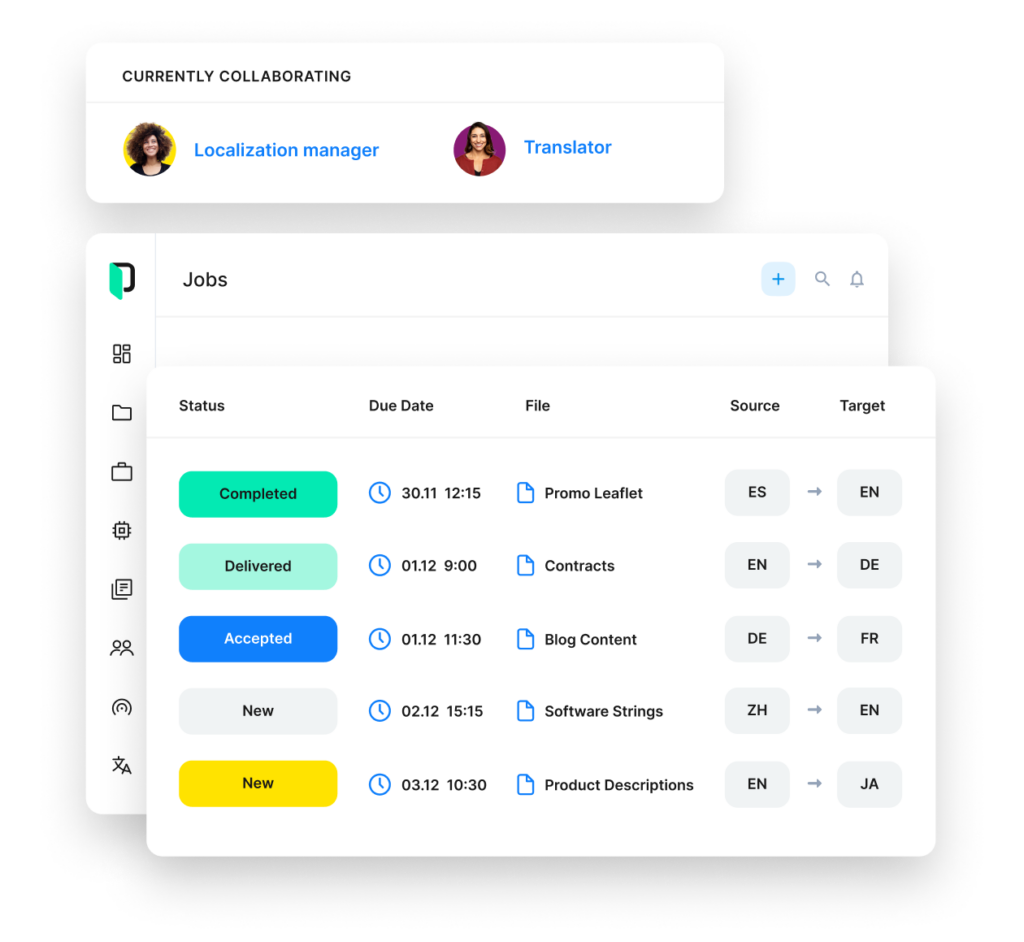In translation, a term base—also known as translation glossary—is a list of established terms, usually organized in alphabetical order, that clarifies the use of terms related to a specific subject area. Along with translation memory (TM), term bases play a key role in keeping translation quality and consistency at an unparalleled height when adapting products for global markets.
Why should you use a term base?
A term base clarifies terms that are otherwise hard to translate. It is basically a list of terminologies with fixed meaning and translation. Your translators may not always have access to the context information that your content is based on. They might end up spending hours trying to find a proper translation for a single technical term. A term base helps them skip this tiresome step, suggesting an accurate and well-accepted translation.
How does a term base work?
A term base works when a translator starts translating a segment in a tool such as a translation management system. If the segment contains a term or a phrase that matches an entry in the term base, the translator will receive a suggestion about how certain /terms should be translated.
Sometimes, there may be confusion over how a term base differs from translation memory. In fact, translation memory is used to pre-translate a document. It is only after this process that a term base starts to join the game. In this sense, a term base has a more “live” taste compared with translation memory.
It’s also worth noting that neither TM nor term base has a formally defined character limitation on the length of each translation unit. In other words, it is possible that you have a terminology-like sentence in a TM file while also having a term base file that contains sentence-long terminologies.
Best practices for using a term base for translation
Now that you have a better understanding of what a term base is and how it works, you may start wondering how you could make use of it. Explore our ultimate list of proven practices to make sure you make the best of using a term base.
Put “non-translatables” in your term base
Do you have any portions of content that you would rather have in their original language, such as the company founder’s name, product name, acronyms, or something your translator thinks should better remain untranslated? A good practice here is to include all these terms in your term base, especially when you plan to outsource the translation to a third party that may not be familiar with your company preferences.
Keep your term base up to date
As the volume of translation expands, so do your TM and term base. It’s only a matter of time before you realize that your TMs and term base start to overlap or run counter to one another. You may have 3 or 4 translation versions for the same string that uses different vocabularies. Make sure to have your translator update the term base—and even translation memory—every time new content has been introduced.
Use term bases for quality (QA) checks
A term base is important not only because it holds the most accurate, “official” translation, but also because it’s a good way to ensure your translation is consistent, especially if the content you seek to translate is technology-focused. Therefore, it’s recommendable to use a term base as a QA check tool to ensure certain terms have an accurate and consistent translation.
Documentation
Before you put your term base to use, you may want to include some descriptions for each of the terms involved. Specifying what each term represents provides important context information for your translators, helping them to understand the source content and improving their work efficiency.
Categorize your term base when necessary
Context matters. A “tier” can mean one thing in construction but something completely different in political science. If you need to translate documents in different business fields, you should catalog your term base based on topics. Phrase TMS, for example, allows you to create multiple term bases and associate them with different project types.
Beware of locales
A language can have different locales. Spanish is spoken in not only Spain but also Latin America as well as a number of areas of North America as well. Therefore, the translation of a term may differ across these locales. Phrase TMS offers an effective and flexible way to associate your term base with certain locales.
Communicate with your translators
There is no “perfect” translation. Even if you believe the terms you have included in your term base are the most official or accurate ones, there might be cases where you need a workaround (especially when you are translating marketing-related materials). Make sure you always keep good communication with your translator resource team for their opinions.

Phrase TMS
The enterprise-ready translation management system
Work with the leading TMS to automate translation workflows with cost control and quality checks.




